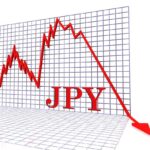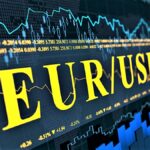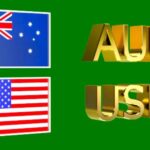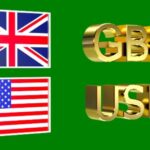EURUSD rises above 1.0440 as market sentiment improves for riskier assets following Russia and Ukraine’s agreement to begin peace talks.
EURUSD rises to around 1.0440 in Thursday’s European trading session. The major currency pair strengthens as investors’ risk appetite has improved dramatically as a result of the positive developments in the Russia-Ukraine dispute since both countries agreed to start peace negotiations.
Investors brace for heightened uncertainty as President Trump prepares to impose reciprocal tariffs.
Market sentiment improved as US President Donald Trump stated he had a “lengthy and highly productive” talk with Russian leader Vladimir Putin , who decided to begin peace talks with Ukraine.
On Wednesday, US Defense Secretary Pete Hegseth warned that Ukraine should abandon its bid for NATO membership and reexamine its aims of regaining land captured by Russia.
US President Donald Trump’s constructive endeavor to halt the three-year-long violence has increased the appeal of risk-sensitive assets like the Euro (EUR). The Russia-Ukraine truce would contribute to the resolution of the Eurozone’s energy issue and the global supply chain. Such a scenario would be advantageous for the Euro.
Nonetheless, investors suspect that the Euro is unlikely to maintain its recovery move due to dismal Eurozone economic performance and persistent predictions that the European Central Bank (ECB) will continue the monetary easing cycle as inflationary pressures are on track to return to the 2% objective by the year.
Daily Market update: EURUSD gains as investors prepare for Trump’s retaliatory tariffs.
Market investors are concerned that the Euro’s recovery could stall as US President Donald Trump prepares to announce reciprocal tariffs before meeting with Indian Prime Minister Narendra Modi on Thursday, according to CNBC.
Trump poised to raise taxes on European auto imports to 10% from the existing 2.5%. The United States is the European Union’s (EU) second-largest market for vehicle exports, after only the United Kingdom. According to ACEA, the US accounted for more than 20% of total EU vehicle exports in 2023.
Reciprocal tariffs will have a negative impact on the Eurozone economy, leading to a trade conflict between Europe and the United States. On Tuesday, European Commission President Ursula von der Leyen warned that the EU would move to “safeguard its economic interests” and is prepared to take “proportionate countermeasures.” Her remarks come after Trump announced 25% tariffs on all steel and aluminum imports, claiming that they “will not go unanswered”.
Boris Vujčić, ECB policymaker and Governor of the Croatian National Bank, stated in an interview with Reuters that market expectations for three additional interest rate decreases this year are justified. Vujčić suggested that the ECB delete the reference to’restrictive policy’ from the March policy statement. He also stated that rate cuts are expected to occur quickly “Services inflation will fall in the coming months.”
The Federal Reserve projected to maintain interest rates unchanged for an extended period of time.
The US dollar (USD) fell sharply following optimistic stories about Russia-Ukraine truce talks, as investors returned to safe-haven assets. The US Dollar Index (DXY), which measures the value of the greenback against six major currencies, fell to 107.50.
However, the outlook for the US Dollar remains positive, as the hotter-than-expected Consumer Price Index (CPI) report for January offered sufficient justification for Federal Reserve (Fed) authorities to keep interest rates in the present range of 4.25%-4.50% for an extended length of time.
Analysts at Macquarie have reiterated their prediction that the Fed will continue on “long hold in 2025,” with no move in the fed funds rate following “January’s hot CPI report.” They first directed their Long-term hold call following the announcement of the solid January employment report on February 7.









